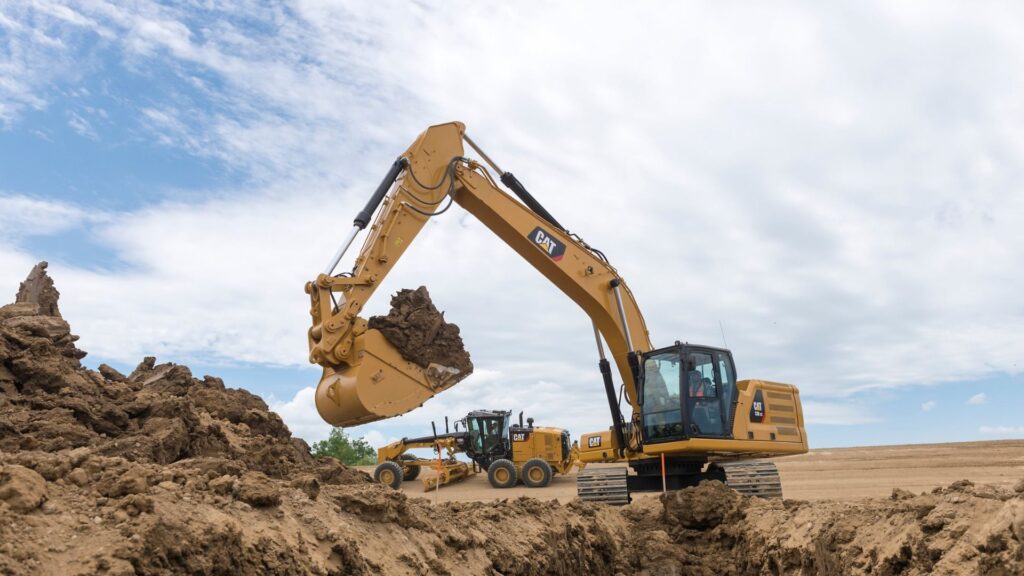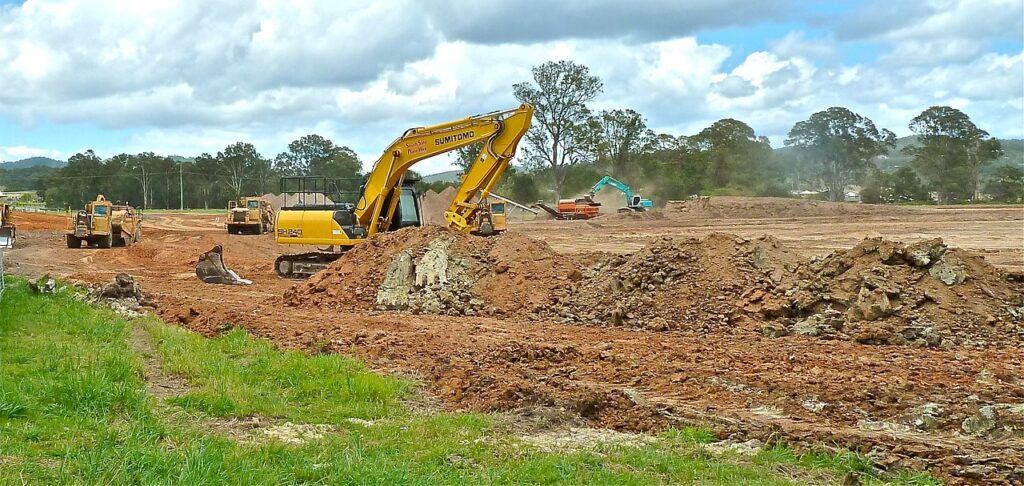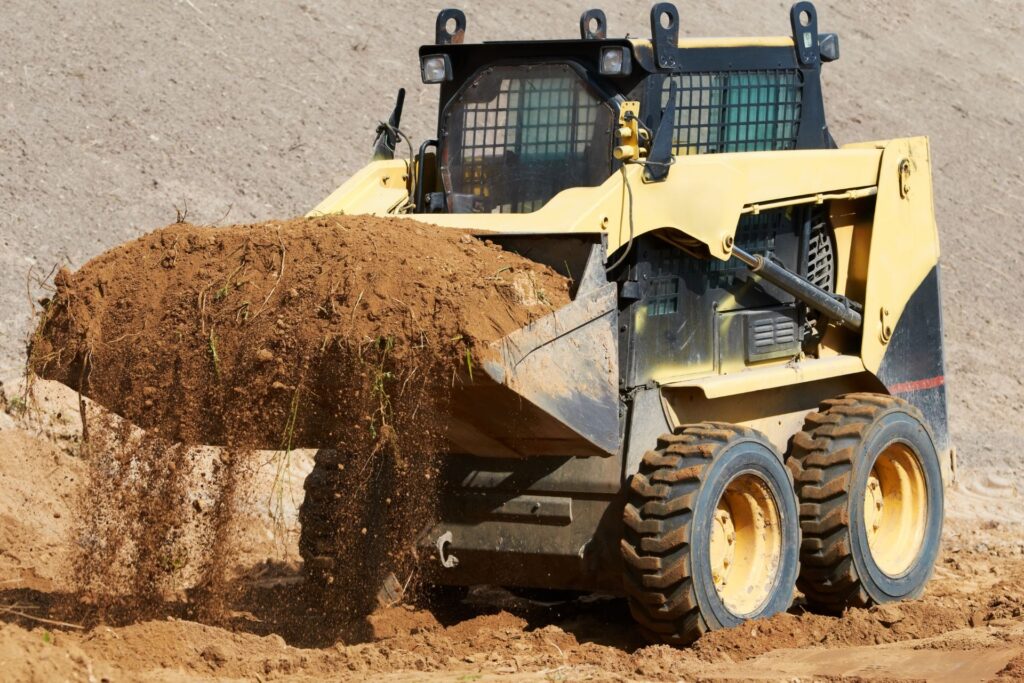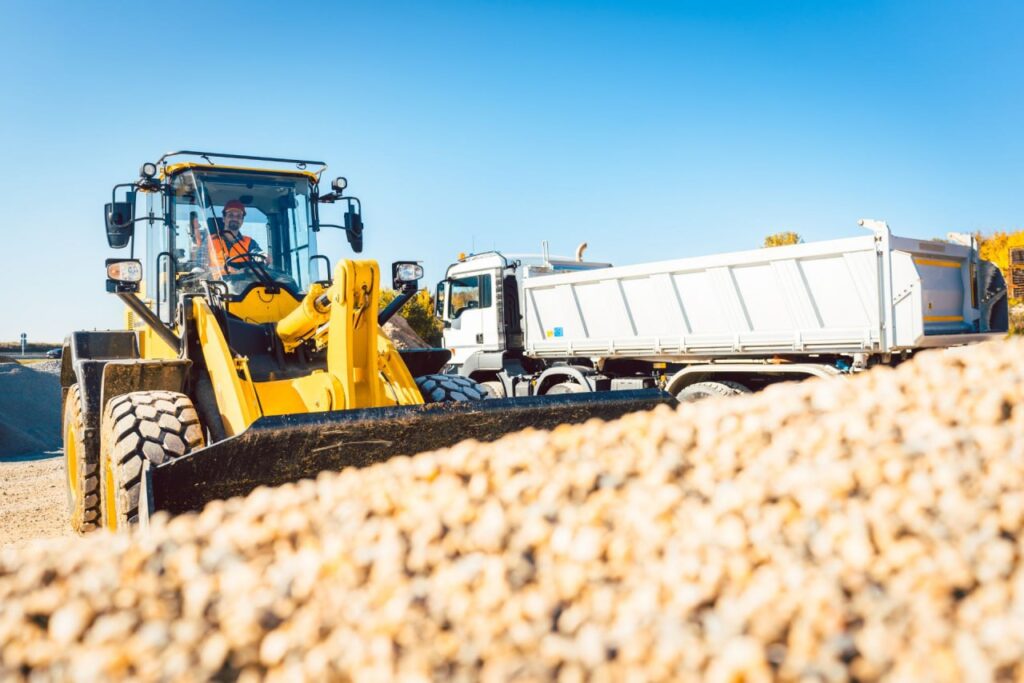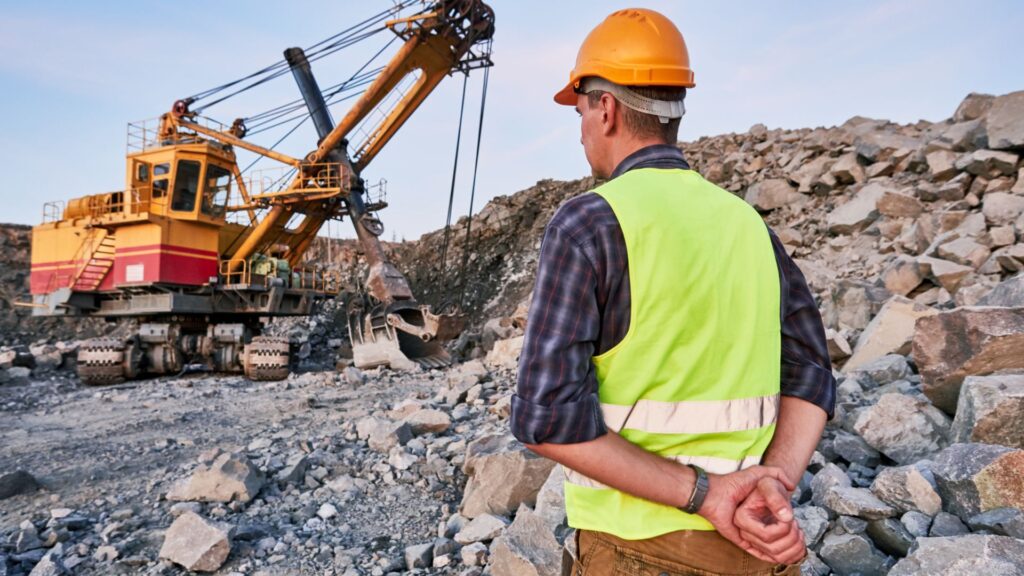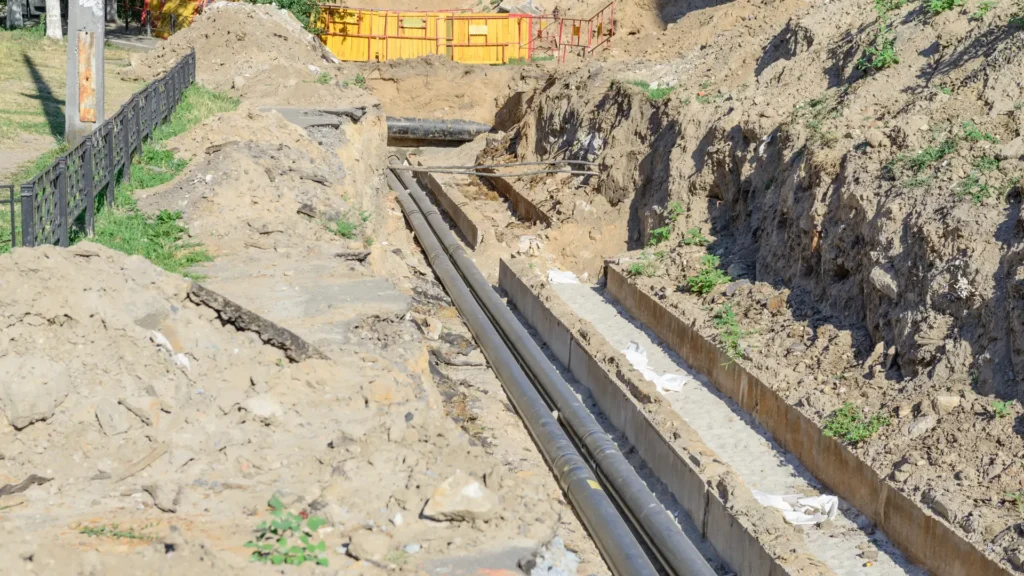Welcome to our comprehensive guide on understanding how much an excavator can dig in a day in New Zealand. Excavation is a crucial step in many construction projects, from building foundations and roadworks to residential landscaping and agricultural developments. Whether you’re planning a small backyard project or a large commercial venture, knowing the capabilities of different types of excavators and the factors that influence their efficiency is essential. In this blog post, we’ll explore the types of excavators, factors affecting their performance, practical applications, cost considerations, and much more to help you make informed decisions for your excavation needs.
An excavator in New Zealand can typically dig between 50 to 200 cubic meters per day, depending on factors such as the type and size of the excavator, soil conditions, operator skill, and project complexity. Mini excavators handle smaller tasks, averaging 50-70 cubic meters daily, while standard and large excavators can achieve higher rates, up to 200 cubic meters or more under optimal conditions.
- Understanding Excavators
- Factors Influencing Excavation Rate
- Estimating Digging Capacity
- Practical Applications In New Zealand
- Cost Considerations
- Hiring The Right Excavator
- Safety And Regulations
- Future Trends In Excavation
- FAQs: About How Much Can An Excavator Dig In A Day NZ
- Conclusion
- Find A Professional Civil Contractors Company Near You!
Understanding Excavators
Excavators are essential machines in the construction industry, designed to handle various tasks from digging and lifting to demolishing and grading. They come in different sizes and configurations, each suited to specific types of work. To get a better grasp of these versatile machines, let’s delve into the various types of excavators and their components.
Types of Excavators
1. Mini Excavators: Mini excavators, also known as compact excavators, are perfect for smaller jobs and confined spaces. They typically weigh between 1 to 10 tons. These machines are ideal for landscaping, small construction projects, and tasks like trenching and digging in areas with restricted access. Their compact size allows them to maneuver easily around obstacles, making them a popular choice for urban construction sites.
2. Standard Excavators: Standard or medium-sized excavators are the most common type found on construction sites. Weighing between 10 to 45 tons, these machines offer a good balance of power and versatility. They are used for a wide range of tasks, including earthmoving, material handling, demolition, and large-scale digging projects. Standard excavators are equipped with various attachments to enhance their functionality, such as hydraulic breakers and grapples.
3. Large Excavators: Large excavators, also known as heavy excavators, are built for demanding tasks that require significant power and reach. These machines weigh over 45 tons and are used in mining, large-scale construction, and infrastructure projects. Their robust design and powerful engines allow them to handle heavy loads and perform extensive excavation work efficiently.
Components of an Excavator
Understanding the basic anatomy of an excavator helps in comprehending how these machines function and perform their tasks efficiently. Here are the key components of an excavator:
1. Bucket: The bucket is the primary attachment used for digging and scooping materials like soil, sand, gravel, and debris. Buckets come in various sizes and shapes, depending on the specific job requirements. Some buckets are designed for precision digging, while others are used for bulk material handling.
2. Arm: The arm, also known as the boom, is the long, extendable part of the excavator that connects the bucket to the main body of the machine. It provides the necessary reach and depth for digging operations. The arm is hydraulically operated, allowing it to move up, down, and sideways to position the bucket accurately.
3. Cab: The cab is the operator’s compartment, where the excavator is controlled. Modern excavator cabs are designed for comfort and safety, featuring ergonomic seats, intuitive controls, and large windows for better visibility. Some cabs are also equipped with climate control systems to ensure a comfortable working environment in different weather conditions.
4. Tracks/Wheels: Excavators can be either track-mounted or wheel-mounted, depending on their intended use.
- Tracked Excavators: Tracked excavators are equipped with continuous tracks, similar to those on a tank. Tracks provide excellent stability and traction, making them suitable for rough and uneven terrains. They are commonly used in construction and mining projects where the ground conditions can be challenging.
- Wheeled Excavators: Wheeled excavators have rubber tires instead of tracks, allowing them to move quickly and easily on paved surfaces. They are ideal for urban environments and roadwork projects, where mobility and speed are essential.
By understanding the different types of excavators and their components, you can make informed decisions when selecting the right machine for your construction projects. Whether you need a compact excavator for a small landscaping job or a heavy-duty machine for a major infrastructure project, knowing the capabilities and features of each type will help you achieve optimal results.
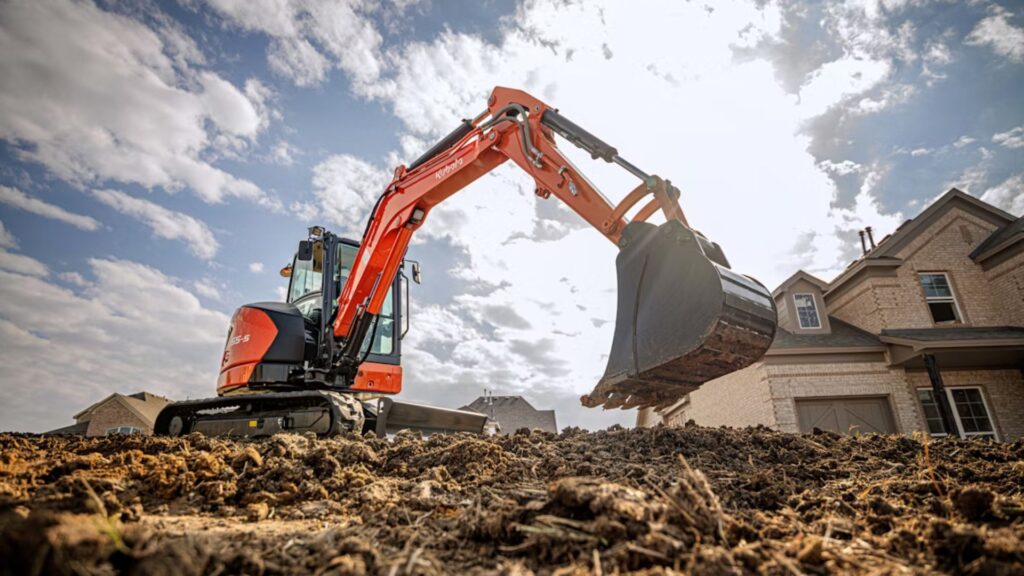
Factors Influencing Excavation Rate
When it comes to excavation projects, several key factors can significantly influence the rate at which the work is completed. Understanding these elements can help in planning and executing excavation tasks more efficiently.
Type of Soil
The type of soil at the excavation site is perhaps the most crucial factor affecting digging efficiency. Different soils present unique challenges:
- Clay: Clay soil is dense and sticky, which can make it difficult to dig through. It often requires more power and time to excavate compared to other soil types. The cohesiveness of clay can also lead to machinery clogging and slower progress.
- Sand: Sand, on the other hand, is much easier to dig through. However, it poses challenges in maintaining trench walls, as sand can easily collapse, requiring additional shoring and stabilization efforts.
- Gravel: Gravel soils can vary widely in difficulty. Loose gravel can be relatively easy to move, but compacted gravel or gravel mixed with other materials can be tough and slow to excavate, often requiring specialized equipment to break through.
Weather Conditions
Weather can have a significant impact on excavation speed and efficiency:
- Rain: Wet conditions can make soil heavier and more challenging to handle. Muddy conditions can also hinder the movement of machinery and increase the risk of equipment getting stuck.
- Extreme Heat or Cold: Very high temperatures can cause equipment to overheat, leading to potential breakdowns and downtime. Conversely, freezing conditions can make the soil hard and difficult to penetrate, requiring additional effort and time to complete the excavation.
- Wind: High winds can create safety hazards, particularly with loose materials like sand or gravel. Wind can also reduce visibility and make operating machinery more challenging.
Operator Skill Level
The expertise and experience of the operator play a pivotal role in excavation performance. Skilled operators can:
- Maximize Efficiency: Experienced operators know how to handle the machinery effectively, making precise cuts and avoiding unnecessary movements, which saves time and fuel.
- Ensure Safety: Proficient operators are more adept at navigating difficult conditions and avoiding accidents, which can cause delays and additional costs.
- Adapt to Conditions: Skilled operators can quickly adapt to changing soil types and weather conditions, maintaining productivity even in less-than-ideal circumstances.
Machine Condition
The condition of the excavation machinery is another critical factor influencing performance:
- Regular Maintenance: Keeping equipment in good condition through regular maintenance checks and servicing can prevent unexpected breakdowns. Well-maintained machines run more smoothly and efficiently, reducing downtime.
- Up-to-date Equipment: Using modern machinery with the latest technology can improve digging efficiency. Newer machines often come with features that enhance precision, power, and operator comfort.
- Condition Monitoring: Continuous monitoring of machine performance can help in identifying potential issues before they become major problems, ensuring that the excavation process remains on track.
By considering these factors and planning accordingly, excavation projects can be completed more efficiently, safely, and cost-effectively. Understanding the interplay between soil type, weather conditions, operator skill level, and machine condition helps in anticipating challenges and implementing strategies to mitigate them. This comprehensive approach not only enhances the excavation rate but also contributes to the overall success of the project.
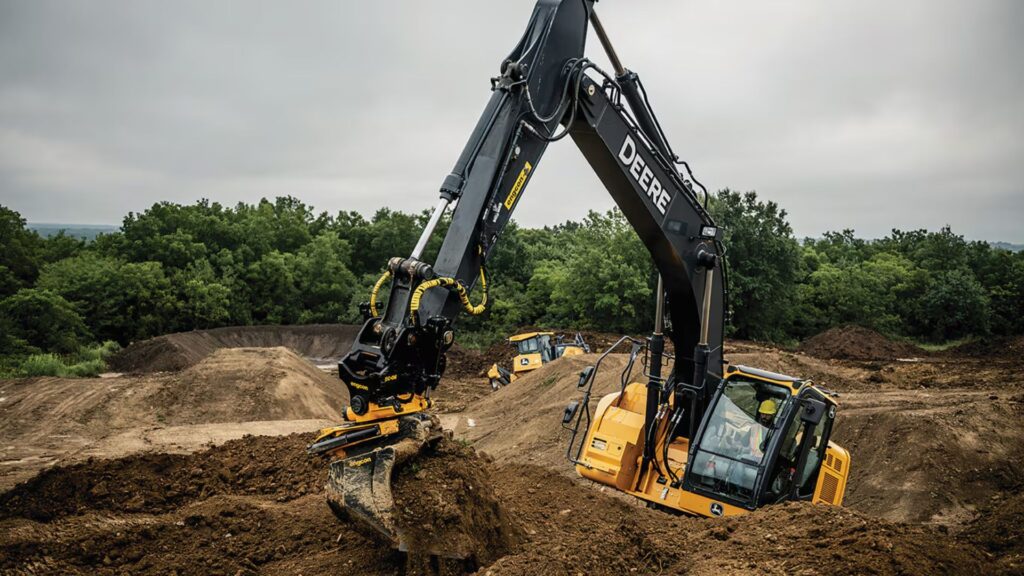
Estimating Digging Capacity
When embarking on any construction project involving excavation, accurately estimating the digging capacity of an excavator is crucial. This ensures efficiency, helps in planning timelines, and keeps costs under control. Let’s dive into some general estimates, real-life examples from New Zealand, and useful tools to help you gauge excavation rates.
General Estimates
The digging capacity of an excavator can vary significantly based on its size and type. Generally, excavators are classified into mini, medium, and large categories, each with distinct capabilities.
- Mini Excavators: These are typically used for small projects or in tight spaces. A mini excavator can dig approximately 10-30 cubic meters per hour. The exact amount depends on factors such as soil type and operator skill.
- Medium Excavators: These are the most common in construction sites, offering a balance between power and maneuverability. On average, a medium-sized excavator can dig about 50-80 cubic meters per hour.
- Large Excavators: Used for large-scale projects, these machines are powerful and efficient. They can excavate between 100-200 cubic meters per hour, depending on the terrain and other conditions.
Case Studies and Real-Life Examples
To give you a clearer picture, let’s look at some real-life examples from construction projects across New Zealand:
1. Auckland Motorway Expansion: During the expansion of the Auckland Motorway, medium to large excavators were extensively used. These machines averaged around 120 cubic meters per hour, thanks to the relatively soft soil and experienced operators.
2. Christchurch Residential Development: In a large residential development project in Christchurch, medium excavators were utilized to prepare the land. On average, each machine excavated about 60 cubic meters per hour, a figure that varied slightly based on specific site conditions.
3. Wellington Urban Renewal: For urban renewal projects in Wellington, mini excavators were often the go-to choice due to space constraints. Despite their smaller size, these excavators managed to dig approximately 20 cubic meters per hour, which was efficient for the scale of the work involved.
These examples highlight how different factors such as soil type, project scale, and machine size can influence digging capacity.
Tools and Calculators
Accurately estimating the excavation rates can be complex, but there are several tools and calculators available to help simplify the process:
1. Excavation Cost Calculator: This tool helps you estimate the cost based on the volume of material to be moved, the type of excavator, and the project’s specific conditions. It’s particularly useful for budgeting and planning.
2. Earthwork Estimating Software: Software like Agtek or Trimble provides comprehensive solutions for estimating earthworks. They allow you to input detailed parameters and get precise estimates of the excavation rates.
3. Online Volume Calculators: Simple online calculators can help you estimate the volume of soil to be excavated. By entering dimensions and soil type, these tools provide quick and easy calculations to aid your planning.
Using these tools can significantly improve the accuracy of your estimates, ensuring that your project stays on track and within budget.
In summary, understanding the digging capacity of excavators is essential for efficient project management. By considering general estimates, learning from real-life examples, and utilizing helpful tools and calculators, you can ensure a smoother and more predictable excavation process.

Practical Applications In New Zealand
In New Zealand, excavation plays a crucial role across various sectors, from residential and commercial to agricultural and rural projects. This section will delve into the practical applications of excavation within these contexts, highlighting the specific needs and examples that showcase the significance of excavation in everyday projects.
Residential Projects
In residential construction, excavation is often the first major step in preparing a site for building. Whether it’s for a new home or a significant addition, the excavation process sets the foundation for all subsequent construction work. Here are some typical excavation needs for residential projects:
1. Foundations: The stability and safety of a home begin with its foundation. Excavation is essential to create the trenches or basements that will support the structure. This involves digging to precise depths and ensuring the ground is level and stable.
2. Swimming Pools: Installing a swimming pool requires significant excavation to shape the pool area. The process includes removing soil, shaping the pool’s layout, and preparing the site for further construction work like installing the pool shell and necessary plumbing.
3. Landscaping: Excavation is also used in residential landscaping projects to create terraces, install retaining walls, and prepare garden beds. Proper excavation ensures that the landscape is functional and aesthetically pleasing, with adequate drainage and stability.
Commercial Projects
Commercial excavation projects are typically larger in scale and complexity compared to residential ones. They require careful planning and execution to meet the demands of larger structures and infrastructure. Here are some examples:
1. Building Foundations: Just like in residential projects, the foundation of a commercial building must be solid and reliable. However, these projects often involve deeper and more extensive excavation work to accommodate larger structures.
2. Roadworks: Excavation is fundamental in road construction and maintenance. It involves removing old pavement, grading the roadbed, and ensuring proper drainage. This is critical for creating roads that can withstand heavy traffic and adverse weather conditions.
3. Utility Installation: For commercial properties, installing utilities like water, sewer, and electrical systems requires precise excavation. Trenches must be dug to lay pipes and cables, and the site must be prepared to ensure these utilities function efficiently and safely.
Agricultural and Rural Projects
In New Zealand’s rural areas, excavation is essential for agricultural and infrastructure projects. These projects support the country’s vital farming industry and help maintain rural communities. Here’s how excavation is applied in these settings:
1. Farm Infrastructure: Excavation is used to build structures like barns, sheds, and silos. These require stable foundations and often involve leveling uneven terrain to create suitable building sites.
2. Irrigation Systems: Effective irrigation is critical for farming, and excavation is key to installing these systems. This involves digging trenches for pipes and creating channels to direct water flow, ensuring that crops receive adequate water.
3. Drainage: Proper drainage systems are vital to prevent waterlogging and erosion on farmland. Excavation helps create ditches, culverts, and other drainage structures that protect crops and soil quality.
4. Roads and Access Paths: In rural areas, access roads and paths are essential for transporting goods and accessing different parts of a farm. Excavation ensures these roads are well-constructed and durable, even in challenging terrains.
In conclusion, excavation is a foundational element in various New Zealand projects, from building homes and commercial properties to supporting agricultural infrastructure. Understanding the specific needs and applications in these different contexts underscores the importance of skilled excavation work to the country’s development and maintenance.
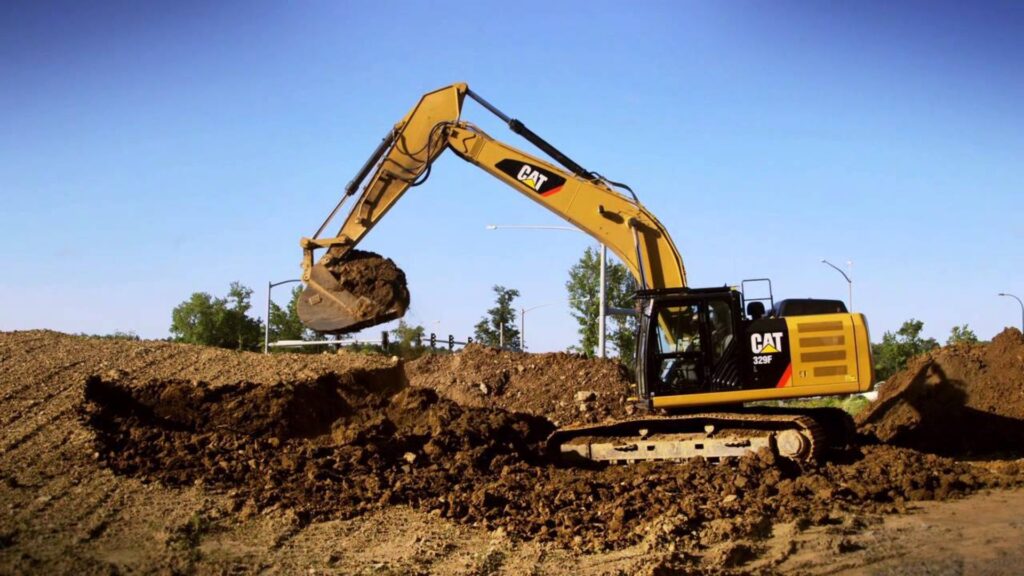
Cost Considerations
When planning excavation projects in New Zealand, understanding the costs involved is crucial for budgeting effectively. Here, we break down the key cost factors you need to consider.
Cost of Hiring Excavators in NZ
The cost of hiring excavators in New Zealand varies depending on the type and size of the equipment. Mini excavators, ideal for small-scale projects or tight spaces, typically cost between $50 to $100 per hour. For medium-sized excavators, which are suitable for residential and light commercial projects, you can expect to pay around $100 to $150 per hour. Large excavators, used for substantial commercial and industrial projects, can range from $150 to $250 per hour.
These rates can fluctuate based on the duration of the hire, with longer-term rentals often attracting lower hourly rates. Additionally, peak construction seasons might see an increase in hire costs due to higher demand.
Additional Costs
When budgeting for excavator hire, it’s important to account for several additional costs beyond the hourly rental fee.
- Fuel: Excavators are heavy machinery and consume significant amounts of fuel. Depending on the size of the machine and the intensity of the work, fuel costs can add up quickly. Estimating fuel expenses based on the expected hours of operation can help in creating a more accurate budget.
- Operator Wages: Hiring an experienced operator is essential for the safe and efficient operation of the excavator. Operator wages in New Zealand can vary but generally range from $25 to $50 per hour. Some rental companies include the operator’s fee in the hire rate, while others charge separately.
- Transportation of Equipment: Moving heavy machinery to and from the work site involves transportation costs. These can vary depending on the distance and the logistics involved. Ensuring the transportation is well-coordinated can prevent delays and additional expenses.
Cost-Saving Tips
Optimizing the excavation process can lead to significant cost savings. Here are some practical tips to help you stay within budget:
1. Plan Ahead: Detailed planning of the excavation project can prevent unexpected costs. This includes having a clear understanding of the site, soil conditions, and the exact requirements of the excavation work.
2. Choose the Right Equipment: Using the appropriate size and type of excavator for your project can improve efficiency and reduce hire time. Avoid overestimating the machinery needs to prevent unnecessary expenses.
3. Efficient Operator Scheduling: Coordinate the work schedule to maximize the operator’s time. Ensure that all preparatory tasks are completed before the excavator arrives on site to avoid idle time.
4. Bulk Fuel Purchase: If your project is long-term, consider purchasing fuel in bulk. This can often be cheaper than buying small quantities as needed.
5. Maintenance and Inspection: Regular maintenance of hired equipment can prevent breakdowns and delays. Before starting the hire period, inspect the machinery to ensure it’s in good working condition, and report any issues immediately to avoid being charged for pre-existing damage.
By understanding the various cost components and implementing these cost-saving strategies, you can manage your excavation project more effectively and stay within your budget. Remember, thorough planning and smart resource management are key to successful and cost-efficient excavation work in New Zealand.
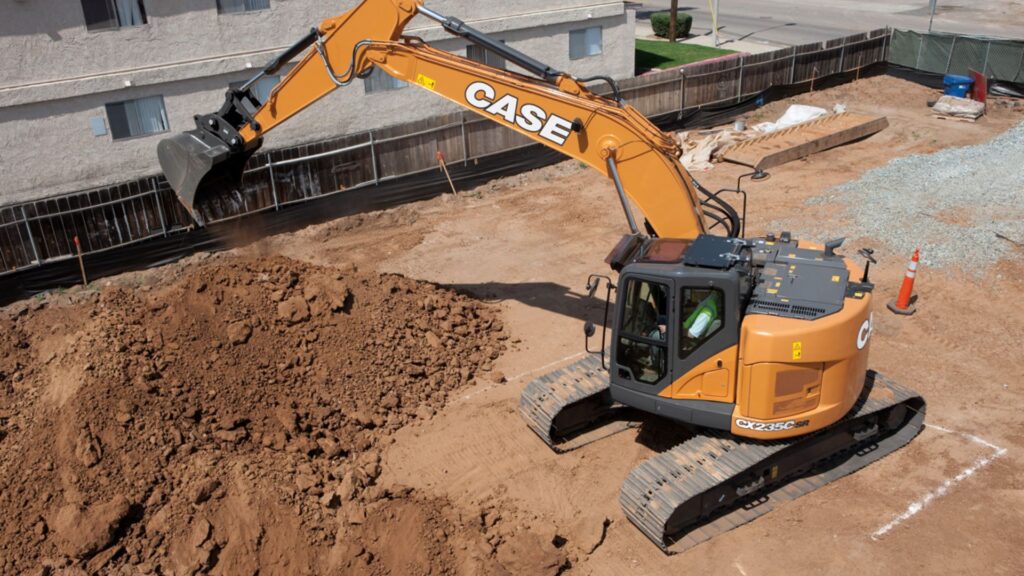
Hiring The Right Excavator
Choosing the Right Equipment
When embarking on a construction project, selecting the right excavator is crucial. This choice can significantly impact the efficiency and success of your project. Here are several key factors to consider:
1. Project Size and Scope: The scale of your project will dictate the type and size of the excavator you need. For smaller, residential projects, a mini excavator may suffice. Larger commercial projects, however, will require more robust, full-sized excavators.
2. Terrain and Site Conditions: Assess the terrain and soil conditions of your site. If you’re working on soft or uneven ground, you may need an excavator with tracks instead of wheels for better stability and traction.
3. Excavator Attachments: Consider the variety of tasks you’ll be performing. Attachments like buckets, augers, and hydraulic breakers can enhance an excavator’s versatility. Ensure the equipment you choose can accommodate the necessary attachments.
4. Budget Constraints: Budget is always a critical consideration. While it may be tempting to opt for the cheapest option, investing in the right equipment can save you time and money in the long run by reducing delays and increasing productivity.
5. Equipment Specifications: Look into the technical specifications of the excavator. Pay attention to its power output, digging depth, and reach. These specs should align with the specific needs of your project to ensure optimal performance.
Hiring a Professional Operator
The benefits of hiring a skilled operator for your excavator cannot be overstated. Here are some compelling reasons why you should consider professional help:
1. Expertise and Experience: Professional operators bring a wealth of knowledge and experience to the table. They are adept at handling complex tasks, ensuring precision and efficiency.
2. Safety: Excavation work can be hazardous. A trained operator is well-versed in safety protocols, significantly reducing the risk of accidents and injuries on site.
3. Efficiency: Skilled operators work faster and more accurately than untrained individuals. Their expertise can lead to quicker project completion, saving both time and money.
4. Reduced Equipment Wear and Tear: Professionals know how to operate the machinery smoothly, minimizing wear and tear on the equipment. This not only extends the lifespan of the excavator but also ensures it performs at its best.
5. Cost-Effectiveness: While hiring a professional might seem like an added expense, the efficiency and reduced risk of damage or accidents can lead to overall cost savings for your project.
Where to Hire Excavators in NZ
Finding a reliable service for hiring excavators in New Zealand is essential for a successful project. Here are some recommendations:
1. Hirepool: With a wide range of excavators and a reputation for excellent customer service, Hirepool is a top choice for many. They offer flexible hiring options to suit various project needs.
2. Kennards Hire: Known for its extensive equipment range and nationwide coverage, Kennards Hire provides quality excavators and skilled operators. Their user-friendly website makes it easy to book the right machinery.
3. Hire Direct Ltd: Specializing in heavy machinery, Hire Direct Ltd offers competitive rates and well-maintained equipment. Their knowledgeable staff can help you choose the right excavator for your project.
4. Equip2: Equip2 offers a variety of excavation equipment with a focus on innovation and efficiency. They provide comprehensive support and maintenance services to ensure your project runs smoothly.
5. NZ Machine Hire: For personalized service and a range of options, NZ Machine Hire is an excellent choice. They cater to both small and large projects, ensuring you get the right equipment for the job.
By carefully selecting the right equipment and hiring a professional operator, you’ll set your project up for success. Reliable hiring services in New Zealand make it easy to find the perfect excavator, ensuring your construction work proceeds efficiently and safely.

Safety And Regulations
Safety Protocols
When it comes to excavation, safety should always be the top priority. Excavation sites pose numerous hazards, making it crucial to adhere to stringent safety protocols to protect workers and the surrounding environment. Here are some key safety measures to follow during excavation:
1. Site Assessment: Before commencing any excavation work, a thorough site assessment is essential. This involves identifying potential hazards, such as underground utilities, unstable soil conditions, and nearby structures that could be affected by the excavation.
2. Proper Training: All personnel involved in the excavation process must receive proper training. This includes understanding how to operate machinery safely, recognizing hazardous conditions, and knowing the appropriate emergency procedures.
3. Protective Gear: Workers should be equipped with the necessary protective gear, including helmets, gloves, high-visibility clothing, and steel-toed boots. Depending on the nature of the excavation, additional protective equipment like respirators or ear protection may be required.
4. Use of Barriers and Signs: Erecting barriers around the excavation site and placing clear warning signs is vital to prevent unauthorized access and to alert workers and passersby to potential dangers.
5. Regular Inspections: Conducting regular inspections of the excavation site ensures that safety measures are consistently upheld. This includes checking for signs of soil instability, ensuring proper shoring and trench supports are in place, and verifying that all equipment is functioning correctly.
6. Emergency Preparedness: Having an emergency response plan is critical. This plan should include procedures for dealing with cave-ins, utility strikes, and other potential emergencies. All workers should be familiar with the plan and know their roles in an emergency situation.
Regulatory Compliance
In New Zealand, excavation projects must comply with specific regulations and obtain the necessary permits to ensure the safety and legality of the work. Here is an overview of the key regulatory requirements and permits needed for excavation projects in New Zealand:
1. Health and Safety at Work Act 2015: This act outlines the responsibilities of employers to ensure the health and safety of their workers. For excavation projects, it mandates that employers must identify and mitigate risks, provide necessary training, and ensure that all work is carried out safely.
2. Building Act 2004: The Building Act governs all building work in New Zealand, including excavation. It requires that all excavation work comply with the New Zealand Building Code, which sets out performance standards for buildings to ensure they are safe, healthy, and durable.
3. Resource Management Act 1991 (RMA): The RMA focuses on the sustainable management of natural and physical resources. Excavation projects require that any potential environmental impacts are considered and managed. This may involve obtaining resource consent if the excavation could affect the environment, such as disturbing a protected area or impacting water quality.
4. Local Council Permits: Depending on the location and scope of the excavation, local councils may require additional permits. These permits ensure that the excavation work complies with local bylaws and zoning requirements. It is essential to contact the relevant local council to determine the specific permits needed for your project.
5. WorkSafe New Zealand Guidelines: WorkSafe New Zealand provides guidelines and standards for safe excavation practices. These guidelines cover a wide range of topics, including trenching, shoring, and working near underground utilities. Adhering to these guidelines helps ensure compliance with health and safety regulations.
By following these safety protocols and ensuring regulatory compliance, you can minimize risks and ensure that your excavation project is carried out safely and legally. Remember, prioritizing safety not only protects workers but also helps prevent costly delays and legal issues.
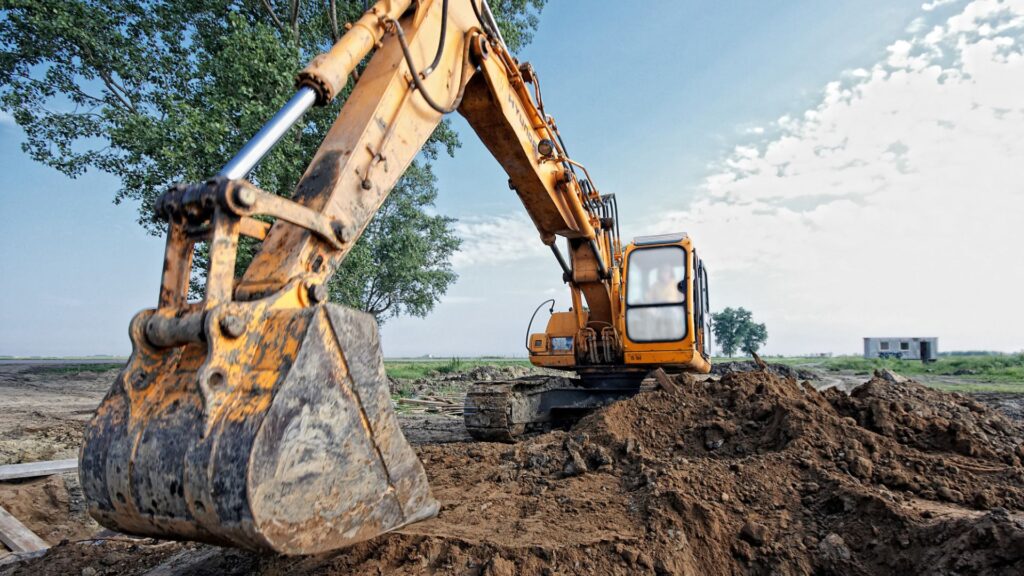
Future Trends In Excavation
Technological Advancements
The excavation industry is undergoing a significant transformation driven by cutting-edge technological advancements. One of the most notable innovations is the integration of GPS technology into excavation processes. GPS systems are enhancing precision and efficiency by providing real-time data on excavation sites. This allows operators to execute their tasks with pinpoint accuracy, reducing the margin of error and ensuring that projects are completed on schedule.
Another groundbreaking development is the advent of automated excavators. These machines, equipped with advanced sensors and AI algorithms, can perform complex excavation tasks autonomously. Automated excavators not only increase productivity but also enhance safety by minimizing human involvement in hazardous conditions. Operators can now control these machines remotely, reducing the risk of on-site accidents. The use of drones for site surveys and inspections is also becoming more prevalent, providing detailed aerial views of excavation sites and identifying potential issues before they become major problems.
The adoption of Building Information Modeling (BIM) in excavation is another game-changer. BIM enables the creation of detailed 3D models of excavation sites, facilitating better planning and coordination among project stakeholders. This technology streamlines the excavation process, reduces costs, and improves overall project outcomes.
Sustainable Practices
As the world moves towards more sustainable practices, the excavation industry is no exception. There is a growing emphasis on environmentally friendly excavation methods that minimize the impact on the surrounding ecosystem. One such practice is the use of biodegradable lubricants and hydraulic fluids in excavation machinery. These products are designed to break down naturally, reducing soil and water contamination risks.
Another sustainable practice gaining traction is the implementation of soil remediation techniques. Excavation projects often involve disturbing large areas of land, which can lead to soil degradation. Soil remediation methods, such as phytoremediation and bioremediation, use plants and microorganisms to clean and restore contaminated soils. These practices not only mitigate environmental damage but also promote the long-term health of excavation sites.
In addition, the industry is seeing a shift towards the use of electric and hybrid excavation equipment. These machines produce fewer emissions compared to their diesel-powered counterparts, significantly reducing the carbon footprint of excavation projects. Companies are also exploring the use of renewable energy sources, such as solar and wind power, to run their operations sustainably.
Water conservation is another critical aspect of sustainable excavation. Techniques like dewatering, which involves removing water from excavation sites, are being optimized to minimize water wastage. Recycled water is increasingly used in dust suppression and equipment cleaning, further reducing the environmental impact.
Overall, the future of excavation is being shaped by technological advancements and sustainable practices. These trends not only enhance the efficiency and safety of excavation projects but also ensure that they are conducted in an environmentally responsible manner. As technology continues to evolve, the excavation industry will undoubtedly see even more innovative solutions that drive progress and sustainability.

FAQs: About How Much Can An Excavator Dig In A Day NZ
Conclusion
In conclusion, this guide has explored the essential aspects of excavation projects, from understanding the various types of equipment needed to the importance of hiring skilled professionals. Careful planning and selecting the right machinery are crucial for the success and efficiency of any excavation endeavor. By making informed decisions, you can ensure your project runs smoothly and meets all necessary standards. We encourage you to take these insights into account when planning your next project. Additionally, we invite you to share your experiences, tips, or questions in the comments section below, fostering a community of shared knowledge and support.
Find A Professional Civil Contractors Company Near You!
- Christchurch Earthworks Contractors
- Civil Construction Company Auckland
- Civil Construction Company Hastings
- Civil Construction Company Hawkes Bay
- Civil Construction Company Napier
- Civil Construction Company Wellington
- Civil Engineering Earthworks Cambridge
- Digger Hire Kapiti
- Earthmoving Hamilton
- Earthmoving South Auckland
- Earthworks Hamilton
- Earthworks Kapiti
- Earthworks Mangawhai
- Earthworks Northland
- Earthworks Warkworth
- Earthworks Whangarei
- Hastings Earthmovers
- Hawkes Bay Earthmovers
- Hydro Seeding Auckland
- Hydroseeding Hamilton
- Hydroseeding Kapiti
- Hydroseeding Waikato
- Napier Earthmovers
- Siteworks Kapiti
- Tauranga Earthworks Contractors
- Wellington Earthworks Contractors
About the Author:
Mike Veail is a recognized digital marketing expert with over 6 years of experience in helping tradespeople and small businesses thrive online. A former quantity surveyor, Mike combines deep industry knowledge with hands-on expertise in SEO and Google Ads. His marketing strategies are tailored to the specific needs of the trades sector, helping businesses increase visibility and generate more leads through proven, ethical methods.
Mike has successfully partnered with numerous companies, establishing a track record of delivering measurable results. His work has been featured across various platforms that showcase his expertise in lead generation and online marketing for the trades sector.
Learn more about Mike's experience and services at https://theleadguy.online or follow him on social media:

